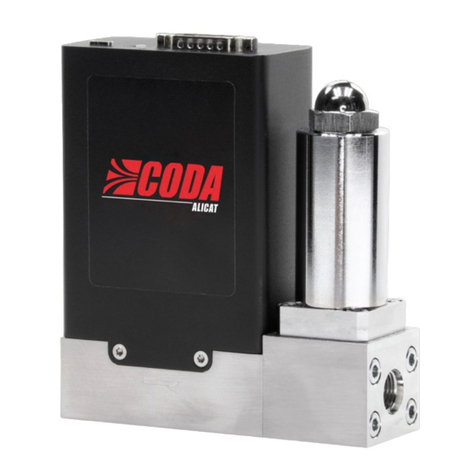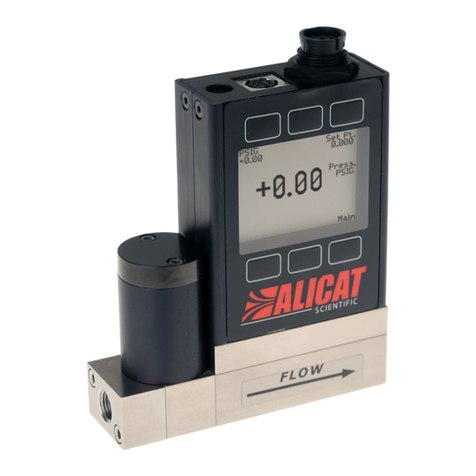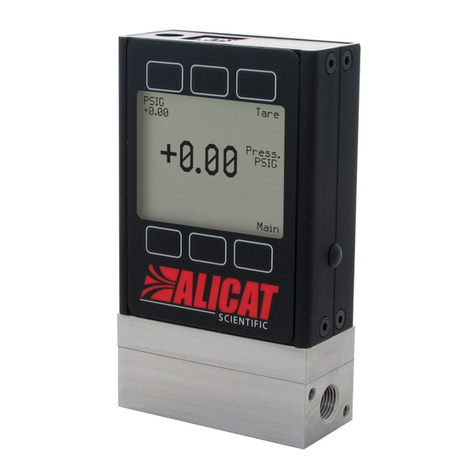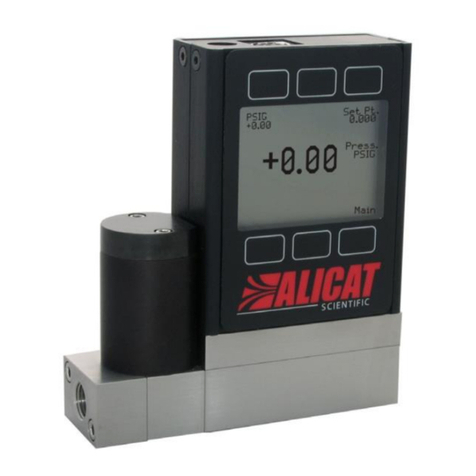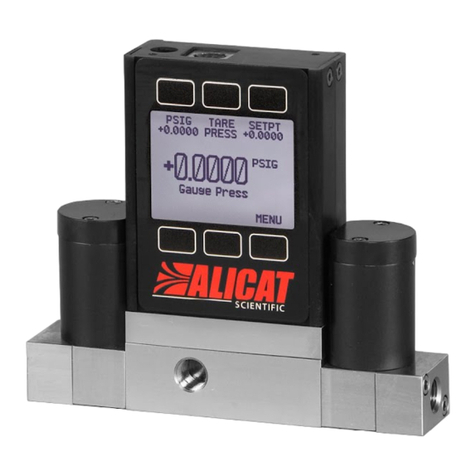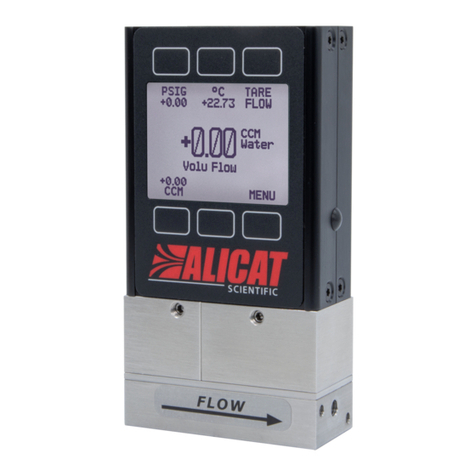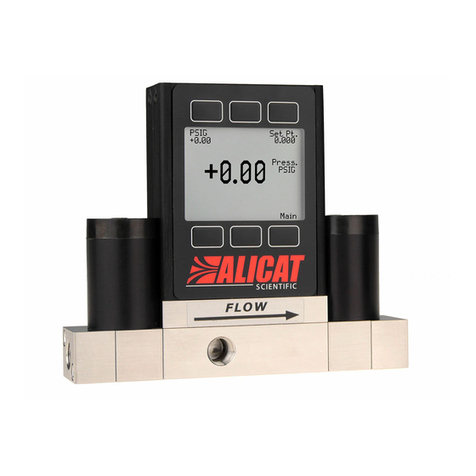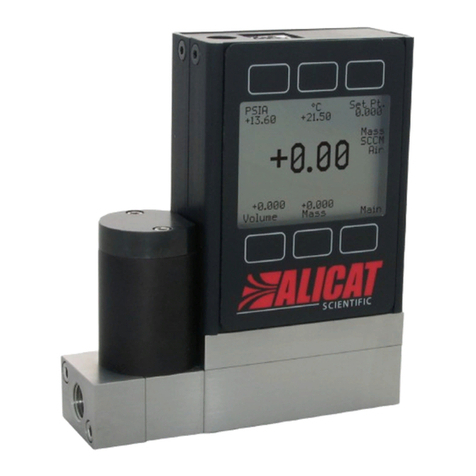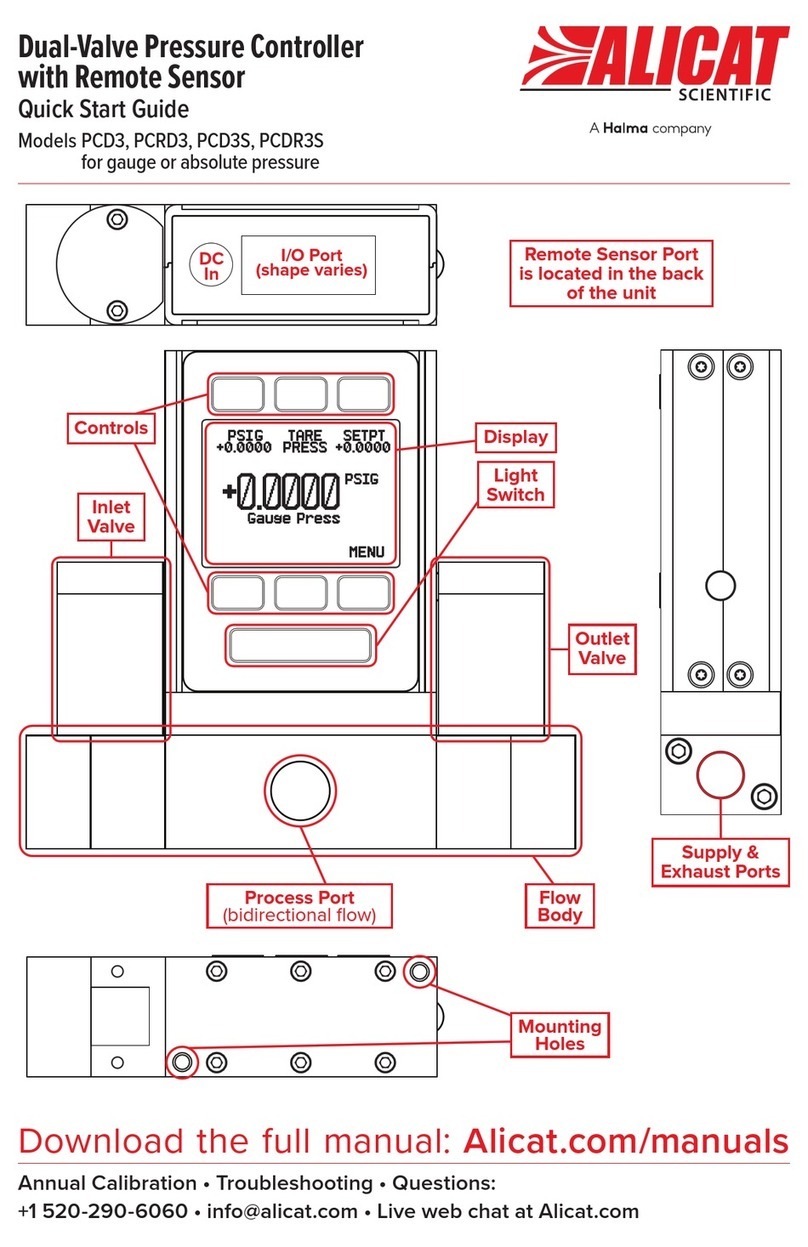
10 Getting Started
Power and Signal Connections
Power can be supplied to your controller through either the power jack or the multi-pin
connector on top of your device.
✓ Note: Power requirements vary based on analog configuration and valve type. Please
reference the associated specification sheet at alicat.com/specs for power requirements.
Standard 8-Pin Mini-DIN Pinout
Pin Function
Not Connected Optional: 4–20 mA primary output signal
Static 5.12 Vdc by default. Optional: secondary analog output
(4–20 mA, 0–5 Vdc, 1–5 Vdc, 0–10 Vdc) or basic alarm
Serial RS-232 RX / RS-485(−) Input Signal (receive)
Analog Setpoint Input
Serial RS-232 TX / RS-485(+) Output Signal (send)
0–5 Vdc Optional: 1–5 Vdc or 0–10 Vdc output signal
Power In (as described above)
Ground (common for power, digital communications, analog signals and alarms)
The above pinout is applicable to all devices with the Mini-DIN connector. The availability of dierent output
signals depends on the options ordered. Optional configurations are noted on the unit’s calibration sheet.
▲Caution: Do not connect power to pins 1 through 6, as permanent damage can occur.
It is common to mistake pin 2 (5.12 Vdc Output) as the standard 0–5 Vdc analog output
signal. Pin 2 is normally a constant 5.12 Vdc.
More pinout configuration options begin on (page 24).
Analog Signals
Primary Analog Output Signal
Most devices include a primary analog output signal, which is linear over its entire range.
For ranges that start at 0 Vdc, a zero-pressure condition is indicated at approximately 0.010
Vdc. Full scale pressure is indicated by the top of the range: 5 Vdc for 0–5 Vdc, 20 mA for
4–20 mA signals, and so on.
Option: Secondary Analog Output Signal
The default 8-pin Mini-DIN connector places the secondary analog output on pin 2 for both
voltage and current signals. Since pressure is the only measured parameter in the pressure
series, this secondary analog output can be used as a comparison to the primary analog
output.
Option: 4–20 mA Current Output Signal
If your controller has a primary or secondary output signal of 4–20 mA current, your pressure
controller will require 15–30 Vdc power.
▲
Caution: Do not connect 4–20 mA devices to “loop powered” systems, as this will
damage portions of the circuitry beyond repair and void the warranty. If you must
interface with existing loop powered systems, always use a signal isolator and a separate
power supply.
A dual-valve gauge pressure
controller with the standard 8-pin
Mini-DIN serial connector.
Male Connector: Cable
Female Connector: Device
1
4
5
68
7
3
4
5
6
87
3


